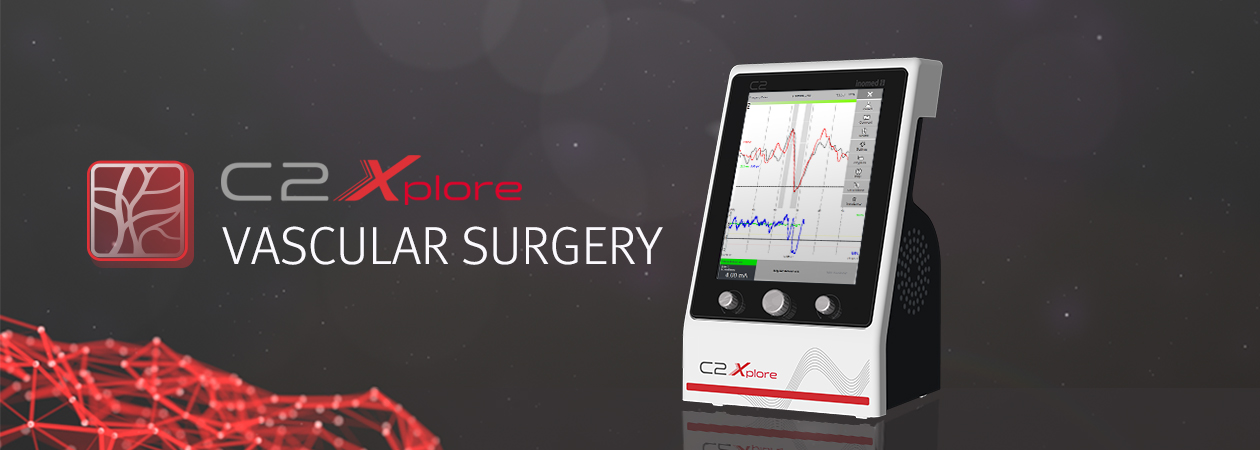
During carotid artery surgery, recording of somatosensory evoked potentials (SEP signals) is recommended for the monitoring of neuronal electrical activity. It helps detect inadequate blood supply to the brain hemispheres. If the SEP amplitude changes while the carotid artery is clamped, it can be an indication of ischaemia. A 50% amplitude reduction in comparison to the baseline amplitude prior to clamping is considered a sign that ischaemia is occurring.*
*Wiss. Arbeitskreisen Kardioanästhesie und Neuroanästhesie - Neuromonitoring in der Kardioanästhesie. Eine gemeinsame Stellungnahme der DGAI, SGAR und DGTHG, Anästh Intensivmed 2014; 55: 521-538.
inomed has provided the C2 Xplore with its special C2 SEP software module for efficient neuromonitoring during carotid artery surgery.
Sensory function is continuously monitored during interventions. Stimulation electrodes are placed on the median nerve, contralaterally to the operation side, while signals are recorded from the sensory cortex on the operation site. A comparison measurement at the level of the cervical vertebrae C7 can also be useful for systemic effect differentiation.
During the entire surgical procedure, the latency and amplitude of the recorded SEP signals are displayed in a trend window. If the measured values reach one out of three adjustable threshold values, the surgeon is notified: yellow, orange and red signals indicate the threshold levels, supported by sounds. The surgeon can then react accordingly, for example by placing a shunt, to prevent irreversible damage.
With the appropriate accessories >>, the C2 Xplore is the perfect solution for efficient and user-friendly neuromonitoring in vascular (carotid artery) surgery.